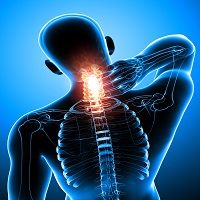Article
Stay Tuned: Nonpharmacologic Treatment for Long-Term Neck Pain
Author(s):
A Swedish study is set to analyze the effect of massage and exercise therapy on subacute and long-lasting neck pain, according to an article in Trials. While both massage and exercise therapy are widely used for neck pain, there is little clinical evidence on the effectiveness of these treatments. Even where outcome measurements are available, the results have been conflicting.

A Swedish study is set to analyze the effect of massage and exercise therapy on subacute and long-lasting neck pain, according to an article in Trials. While both massage and exercise therapy are widely used for neck pain, there is little clinical evidence on the effectiveness of these treatments. Even where outcome measurements are available, the results have been conflicting.
Neck pain is pesky, costly, and potentially debilitating. According to the researchers, between half and three quarters of people with current neck pain will report neck pain again one to five years later. In addition, half of all work-related injuries reported in Sweden involve disorders of the muscles and joints. This makes the socio-economic impact of neck pain extensive, and the overall costs in terms of lost productivity and quality of life very high.
The upcoming study will be a randomized controlled trial in which at least 600 study participants with subacute or long-lasting nonspecific neck pain will be recruited and randomly allocated to one of four treatment arms: massage therapy; exercise therapy; exercise therapy combined with massage therapy; and simple advice to “stay active.” Study participants are being recruited through advertising with a mix of traditional and online marketing channels, and the research will use a combination of in-person and online interventions and measurements — including web-based self-report questionnaires at seven, 12, 26 and 52 weeks after inclusion.
The primary outcomes are a clinically important improvement in pain intensity and pain-related disability at follow-up, measured with a modified version of the Chronic Pain Questionnaire (CPQ). The secondary outcomes are global improvement, health-related quality of life (EQ-5D), use of sick leave, use of pharmacologic therapy, and overall healthcare utilization. Adverse events will be measured by questionnaires at return visits to the clinic. Neck pain intensity and pain-related disability will be measured every week for one year.
“We hypothesize that massage and physical exercise have beneficial effects on subacute and long-lasting neck pain because that is the case with chronic low back pain,” the study authors observed, citing earlier research. “There is scientific evidence for the effect of massage on nonspecific low back pain, especially when combined with exercises and education. Physical exercise has been shown to be efficient in reducing the pain and disability in long-lasting low back pain and to reduce work absenteeism.”
Participants randomized to exercise therapy will receive instruction and support on physical exercises in 30-minute sessions (total visit time 45 minutes) at the study center. The primary focus is on strengthening of the deep neck muscles and shoulder muscles, as well as strengthening and passive stretching of breast muscles and jaw muscles. The delivery method is one-on-one, and the only exercise equipment used is a rubber band (for the shoulder muscle strengthening). Participants randomized to the “advice to stay active” arm will get guidance and support from a therapist on staying active and on pain-coping strategies, according to guidelines and evidence-based reviews.
Patient recruitment is currently ongoing.





